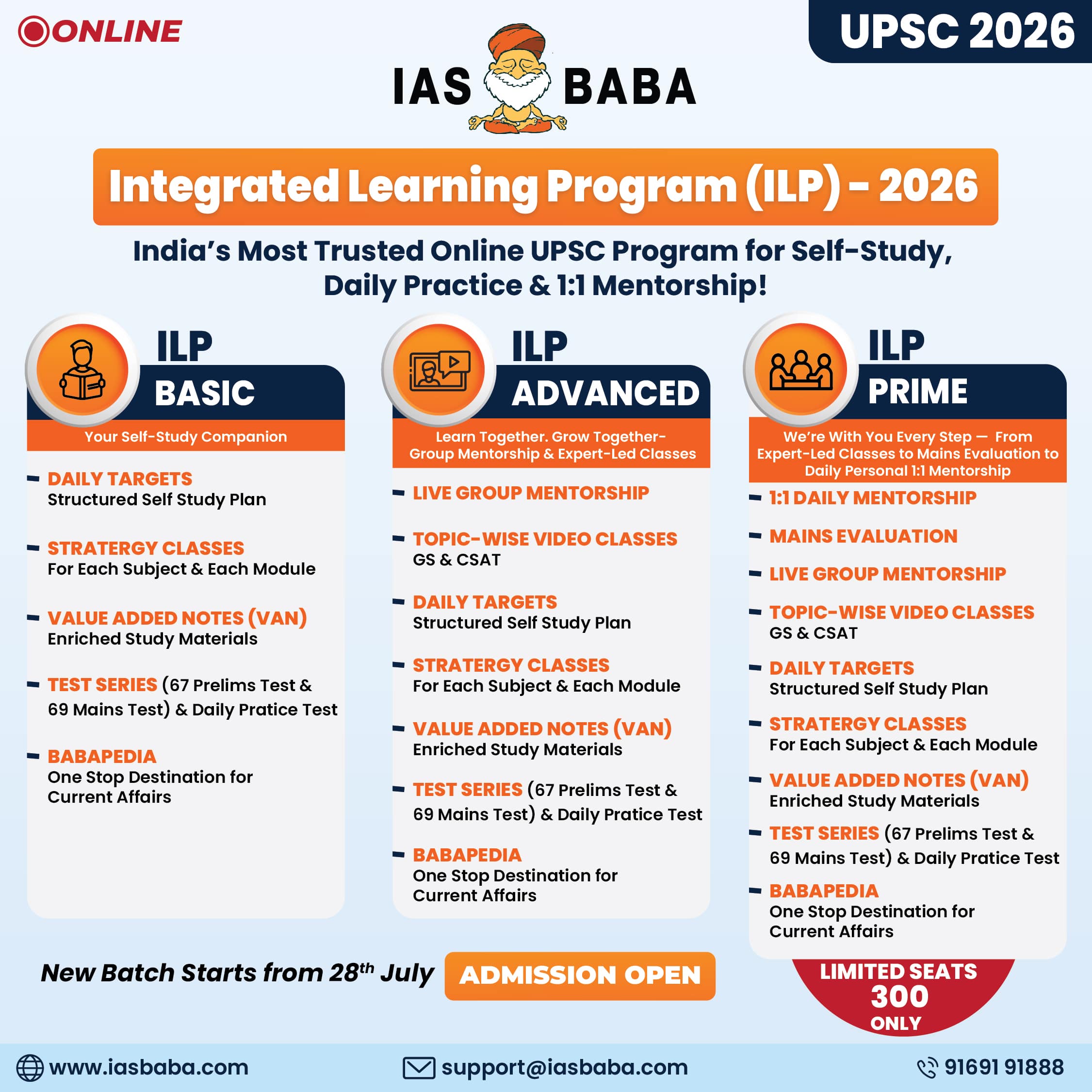IASbaba's Daily Current Affairs Analysis
Archives
(PRELIMS & MAINS Focus)
Syllabus
- Prelims –Economy
Context: Recently, the directorate general of foreign trade (DGFT) has imposed restrictions on imports of certain gold jewellery and articles.
Background:-
- Restrictions mean that a license will be required from the government to import these goods.
- Although, no such permission is required for imports under the India-UAE Comprehensive Economic Partnership Agreement (CEPA) tariff rate quota ((TRQ).
- CEPA: It is a kind of free trade pact, which covers negotiation on the trade in services and investment, and other areas of economic partnership.
- TRQ: It allows a lower tariff rate on imports of a given product up to a specified quantity.
About Directorate General of foreign trade (DGFT):-
- Establishment: 1991.
- HQ: New Delhi.
- Ministry: Ministry of Commerce and Industry.
- Headed by: Director General of Foreign Trade.
- Objective: promoting India’s exports.
Functions of DGCI:-
- Licensing of imports and exports.
- Regulate, restrict or prohibit exports and imports. (UPSC CSE: Free Trade Agreements regime)
- Providing a complete database of all exporters and importers in India.
- It has the authority to prohibit, restrict, and regulate importers and exporters.
- It plays an advisory role to the Government on Policy measures pertaining to national and international economic scenarios.
- It is responsible for formulating and implementing the Foreign Trade Policy. (UPSC CSE: New Foreign Trade Policy)
- It also issues scrips/authorization to exporters and monitors their corresponding obligations.
MUST READ: Moratorium on e-commerce trade
SOURCE: AIR
PREVIOUS YEAR QUESTIONS
Q.1) Consider the following statements: (2023)
Statement-! :
Switzerland is one of the leading exporters of gold in terms of value.
Statement-II:
Switzerland has the second-largest gold reserves in the world.
Which one of the following is correct in respect of the above statements?
- Both Statement-I and Statement-II are correct and Statement-II is the correct explanation for Statement-I
- Both Statement-I and Statement-II are correct and Statement-II is not the correct explanation for Statement-I
- Statement-I is correct but Statement II is incorrect
- Statement-I is incorrect but Statement II is correct
Q.2) With reference to the ‘Banks Board Bureau (BBB)’, which of the following statements is correct? (2022)
- The Governor of RBI is the Chairman of BBB.
- BBB recommends the selection of heads for Public Sector Banks.
- BBB helps Public Sector Banks in developing strategies and capital-raising plans.
Select the correct answer using the code given below:
- 1 and 2 only
- 2 and 3 only
- 1 and 3 only
- 1, 2 and 3
Syllabus
- Prelims –International Relations
Context: The third Sherpas meeting under India’s G20 Presidency began in Hampi, Karnataka recently.
About G20 Sherpas:
- A Sherpa is a personal representative of the leader of a member country at an international Summit meeting such as the G20.
- The Sherpa engages in planning, negotiation and implementation tasks through the Summit.
- They coordinate the agenda, seek consensus at the highest political levels, and participate in a series of pre-Summit consultations to help negotiate their leaders’ positions.
- Sherpas are career diplomats or senior government officials appointed by the leaders of their countries.
- There is only one Sherpa per Summit for each member country; he/she is assisted by several sous Sherpas.
G20 Sherpa Meeting under India’s G20 Presidency:
- The former CEO of NITI Aayog, Amitabh Kant is the G20 Sherpa from India.
- The 1st Sherpa Meeting of India’s G20 Presidency was held on 04 December 2022, in Udaipur Rajasthan.
- The Second G20 Sherpas meeting under India’s G20 Presidency, chaired by India’s G20 Sherpa Shri Amitabh Kant took place in the picturesque village of Kumarakom, Kerala, from March 30 to April 2, 2023.
G20:-
- Establishment: 1999. (UPSC CSE: G20)
- Members: Argentina, Australia, Brazil, Canada, China, France, Germany, India, Indonesia, Italy, Japan, the Republic of Korea, Mexico, Russia, Saudi Arabia, South Africa, Turkey, the U.K., the U.S. and the European Union.
- Presidency of the G20: it rotates every year among members.
- The country holding the presidency, together with the previous and next presidency-holder, forms the ‘Troika’.
- India assumed the presidency of the G20 grouping from Indonesia, in 2022 and will hold the post for a year.
- During India’s presidency, India, Indonesia and Brazil will form the troika.
- The G20 does not have a permanent secretariat or Headquarters.
About Hampi:-
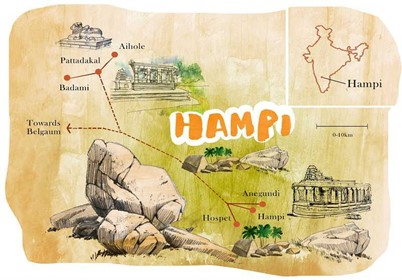
IMAGE SOURCE: Condé Nast Traveller India
- Hampi comprises mainly the remnants of the capital city of the Vijayanagara Empire.
- Vijayanagara Empire: the last great Hindu Kingdom dating 14th-16th century CE.
- Hampi was the capital of the Vijayanagara Empire in the 14th century.
- Discovery: The ruins at Hampi were brought to light in 1800 by an engineer and antiquarian named Colonel Colin Mackenzie. (UPSC CSE: Hampi Stone Chariot)
- Hampi was the capital city during the four different dynasties:-
- Sangama (1336 to 1485 CE): Founded by Harihara I.
- Saluva (1485 to 1503 CE): Founded by Saluva Narasimha.
- Tuluva (1491 to 1570 CE): Founded by Tuluva Narasa Nayaka and the most famous king was Krishnadeva Raya.
- Aravidu (1542 to 1646 CE): Founded by
- It is located in the Tungabhadra basin in Bellary District, Central Karnataka.
- It is a UNESCO World Heritage Site and is called the “World’s Largest Open-air Museum”. (UPSC CSE: Hampi World Heritage site)
- It is also known as Pampa Kshetra, Kishkindha Kshetra and even Bhaskara Kshetra.
- Characteristic features of temples at Hampi: wide chariot streets flanked by a row of pillared mandapas.
- Famous places: Krishna temple complex, Narasimha, Ganesa, Hemakuta group of temples, Achyutaraya temple complex, Vitthala temple complex, Pattabhirama temple complex, Lotus Mahal complex, etc.
MUST READ: Kingdom of Vijayanagara
SOURCE: AIR
PREVIOUS YEAR QUESTIONS
Q.1) Consider the following statements about G-20: (2023)
- The G-20 group was originally established as a platform for the Finance Ministers and Central Bank Governors to discuss international economic and financial issues.
- Digital public infrastructure is one of India’s G-20 priorities.
Which of the statements given above is/are correct?
- 1 only
- 2 only
- Both 1 and 2
- Neither 1 nor 2
Q.2) With reference to ancient South India, Korkai, Poompuhar and Muchiri were well-known (2023)
- capital cities
- ports
- centres of iron-and-steel making
- shrines of Jain Tirthankaras
Syllabus
- Prelims – Science and Technology/Governance
Context: Recently, the indigenous Differential Global Navigation Satellite System (DGNSS) ‘SAGAR SAMPARK’ was inaugurated.
About SAGAR SAMPARK:-
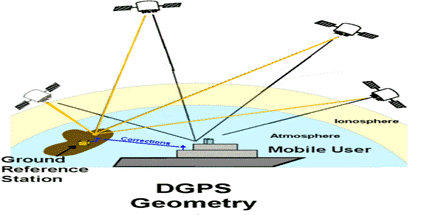
IMAGE SOURCE: chantiernavalborg.com
- Ministry: Ministry of Ports, Shipping and Waterways.
- SAGAR SAMPARK is India’s indigenous Differential Global Navigation Satellite System (DGNSS). (UPSC CSE: NavIC)
- DGNSS: is a terrestrial-based enhancement system which corrects the errors and inaccuracies in the Global Navigation Satellite System (GNSS) allowing for more accurate positioning information.
- Sagar Sampark is able to transmit corrections for both GPS and Global Navigation Satellite System (GLONASS).
- GPS: satellite-based radio navigation system owned by the United States government and operated by the United States Space Force.
- GLONASS: a Russian satellite navigation system operating as part of a radio navigation-satellite service.
- It improves the accuracy of GPS positioning by reducing errors caused by atmospheric inferences, satellite clock drift and other factors.
- The error correction accuracy has been improved from 5 to 10 meters to less than 5 meters.
- Significance of Sagar Sampark:-
- It will help mariners in safe navigation. (UPSC CSE: GAGAN (GPS Aided Geo Augmented Navigation))
- It will reduce the risk of collisions, groundings, and accidents in the port and harbour areas.
- It will lead to the safe & efficient movement of vessels.
- Sagar Sampark at six locations will assist the Director General of Lighthouses and Lightships (DGLL) to provide radio aids to ships for marine navigation.
MUST READ: Geotagging of payment system touchpoints
SOURCE: PIB
PREVIOUS YEAR QUESTIONS
Q.1) Which one of the following countries has its own Satellite Navigation System? (2023)
- Australia
- Canada
- Israel
- Japan
Q.2) With reference to the Indian Regional Navigation Satellite System (IRNSS), consider the following statements : (2018)
- IRNSS has three satellites in geostationary and four satellites in geosynchronous orbits.
- IRNSS covers the entire India and about 5500 sq. km beyond its borders.
- India will have its own satellite navigation system with full global coverage by the middle of 2019.
Which of the statements given above is/are correct? (2018)
- 1 only
- 1 and 2 only
- 2 and 3 only
- None
Syllabus
- Prelims –Environment and Ecology
Context: Recently, a Tigress was spotted with her two cubs, in Sariska Tiger Reserve (STR).
Background:-
- Now, the number of tigers in Sariska Tiger Reserve has increased to 30.
- The government is committed to the conservation of tigers which are important for the environment
About Sariska Tiger Reserve (STR):-

IMAGE SOURCE: researchgate.net
- Location: Alwar, Rajasthan. (UPSC CSE: Sariska Tiger Reserve)
- Sariska Tiger Reserve is nestled in the Aravali hills.
- It has mountains, grasslands, dry deciduous forests and cliffs.
- 1955: It was declared a wildlife sanctuary.
- 1978: It was declared the tiger reserve, making it a part of India’s Project Tiger. (UPSC CSE: Saving the Tiger)
- Vegetation: – the Reserve has a beautiful blending of tropical dry deciduous and tropical thorn forests.
- Fauna:
- The Reserve is famous for Royal Bengal Tiger.
- Other Animals: jungle cats, rhesus macaque, sambhar, chital, wild boar, etc., are found here.
- Bird species: sand grouse, harbour quails, crested serpent eagles, etc.
- Important sites:–
- Kankarwadi Fort: located in the center of the Reserve.
- It is said that Mughal emperor Aurangzeb had imprisoned his brother Dara Shikoh at this fort in the struggle for succession to the throne.
- The Reserve also houses a famous temple of lord Hanuman at Pandupole related to Pandavas.
- It houses the Neelkanth temple built in the 6th century.
MUST READ: Global Conservation Assured|Tiger Standards (CA|TS)
SOURCE: HINDUSTAN TIMES
PREVIOUS YEAR QUESTIONS
Q.1) Consider the following statements : (2023)
- In India, the Biodiversity Management Committees are key to the realization of the objectives of the Nagoya Protocol.
- The Biodiversity Management Committees have important functions in determining access and benefit sharing, including the power to levy collection fees on the access of biological resources within its jurisdiction.
Which of the statements given above is/are correct?
- 1 only
- 2 only
- Both 1 and 2
- Neither 1 nor 2
Q.2) Among the following Tiger Reserves, which one has the largest area under “Critical Tiger Habitat”? (2020)
- Corbett
- Ranthambore
- Nagarjunsagar-Srisailam
- Sunderbans
Syllabus
- Prelims –Science and Technology
Context: National Aeronautics and Space Administration’s (NASA) Perseverance rover has found organic matter on Mars recently.
Background:-
- NASA’s Perseverance rover has discovered evidence of organic compounds in a Martian crater, offering clues on the potential habitability of the planet.
- Organic compounds: carbon-based molecules.
- The results reveal that Mars has a more complex organic geochemical cycle than previously thought, implying the existence of multiple reservoirs of potential organic molecules on the
About Perseverance rover:-
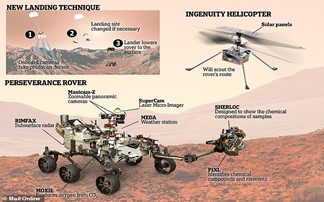
IMAGE SOURCE: readsector.com
- Mission Name: Mars 2020 (UPSC CSE: NASA’s Perseverance and China’s Tianwen-1 set to land on Mars)
- Rover Name: Perseverance
- Launch: July 30, 2020.
- Landing: Feb. 18, 2021 .
- Landing site: Jezero Crater, Mars. (UPSC CSE: NASA’s InSight Mars Mission)
- Power Source: A Multi-Mission Radioisotope Thermoelectric Generator (MMRTG).
- MMRTG: it converts heat from the natural radioactive decay of plutonium (Plutonium Dioxide) into electricity.
- Objectives:-
- Perseverance’s primary objective is looking for signs of ancient microbial life.
- The rover is studying and analyzing the Red Planet’s regolith, rock and dust, and is the first rover to collect and cache samples.
- Regolith: broken rock and soil.
- Perseverance is the most advanced, most expensive and most sophisticated mobile laboratory sent to Mars.
- It is capable of drilling and collecting core samples of the most promising rocks and soils and setting them aside in a “cache” on the surface of Mars.
- It carries a unique instrument, MOXIE or Mars Oxygen ISRU Experiment.
- MOXIE: it will manufacture molecular oxygen on Mars using carbon dioxide from the carbon-dioxide-rich atmosphere.
- It carries Ingenuity, the first-ever helicopter to fly on Mars.
- This is the first time NASA will fly a helicopter on another planet or satellite.
MUST READ: 7th Anniversary of India’s Mars Mission
SOURCE: DOWN TO EARTH
PREVIOUS YEAR QUESTIONS
Q.1) With reference to the Earth’s atmosphere, which one of the following statements is correct? (2023)
- The total amount of insolation received at the equator is roughly about ·10 times of that received at the poles.
- Infrared rays constitute roughly two-thirds of insolation.
- Infrared waves are largely absorbed by water vapour that is concentrated in the lower atmosphere.
- Infrared waves are a part of the visible spectrum of electromagnetic waves of solar radiation.
Q.2) Consider the following pairs : (2023)
Objects in space Description
- Cepheids: Giant clouds of dust and gas in space
- Nebulae: Stars which brighten and dim periodically
- Pulsars: Neutron stars that are formed when massive stars run out of
fuel and collapse
How many of the above pairs are correctly matched?
- Only one
- Only two
- All three
- None
Syllabus
- Prelims – Important Awards
Context: Recently, a boy from Bengaluru won gold at International Biology Olympiad (IBO).
Background:-
- Dhruv Advani, won the gold at the 34th International Biology Olympiad, held at Al Ain, UAE, from July 3 to 11,2023.
- India topped the medals tally at the event by virtue of all four of its students winning the gold medal.
- The event saw the participation of 293 students from 76 countries in this year’s IBO.
- This is the first time that India has turned in an all-gold performance and topped the medals tally in IBO.
About International Biology Olympiad:-
- The International Biology Olympiad (IBO) is the association that organizes the world’s premier biology competition for secondary school students. (UPSC CSE: Chess Olympiad)
- Mission: to identify, inspire, empower and support the next generation of leaders in the life sciences and to develop their international network.
- The International Biology Olympiad competition is organized for pre-university students under the age of 20.
- First IBO: Czechoslovakia in 1990.
- It has since been held annually.
- Every year it is organized by different countries.
- 34th IBO: Al Ain, United Arab Emirates in 2023.
- India organized this Olympiad in
MUST READ: Target Olympic Podium Scheme
SOURCE: THE HINDU
PREVIOUS YEAR QUESTIONS
Q.1) Consider the following statements in respect of the 44th Chess Olympiad, 2022: (2023)
- It was the first time that Chess Olympiad was held in India.
- The official mascot was named Thambi.
- The trophy for the winning team in the open section is the Vera Menchik Cup.
- The trophy for the winning team in the women’s section is the Hamilton-Russell Cup.
How many of the statements given above are correct?
- Only one
- Only two
- Only three
- All four
Section 144 of Code of Criminal Procedure (CrPC), 1973
Syllabus
- Mains – GS 2 (Governance)
Context: The Delhi Police imposed prohibitory measures under CrPC section 144 in flood-prone areas of the city.
About Section 144:

- Section 144 CrPC is a law retained from the colonial era.
- It empowers a district magistrate, a sub-divisional magistrate or any other executive magistrate specially empowered by the state government in this behalf to issue orders to prevent and address urgent cases of apprehended danger or nuisance.
- The magistrate has to pass a written order which may be directed against:
- a particular individual, or
- to persons residing in a particular place or area, or
- to the public generally when frequenting or visiting a particular place or area.
- In emergency cases, the magistrate can pass these orders without prior notice to the individual against whom the order is directed.
Features of Section 144:
- It places restrictions on handling or transporting any kind of weapon in the given jurisdiction.
- The maximum punishment for such an act is three years.
- According to the order under this section, there shall be no movement of public and all educational institutions shall remain closed.
- Further, there will be a complete bar on holding any kind of public meeting or rallies during the period of operation of this order.
- It is deemed a punishable offence to obstruct law enforcement agencies from disbanding an unlawful assembly.
- It also empowers the authorities to block internet access in the region.
- The ultimate purpose of section 144 is to maintain peace and order in the areas where trouble could erupt to disrupt the regular life.
Duration of Section 144 Order:
- No order under this section can remain in force for a period of more than 2 months.
- Under the state government’s discretion, it can choose to extend the validity for two more months with the maximum validity extendable to six months.
- Once the situation becomes normal, section 144 levied can be withdrawn.
Criticism of Section 144:
- Too much power given to magistrate: The section is sweeping, and allows the magistrate to exercise absolute power unjustifiably.
- Rare remedies in case of violation of rights: Under the law, the first remedy against the order is a revision application that must be filed to the same officer who issued the order in the first place.
- An aggrieved individual can file a writ petition in the High Court if their fundamental rights are affected by the order.
- However, in many cases those rights would have already been violated by the state even before the High Court has intervened.
- Unjustifiable imposition: It has also been argued that imposing prohibitory orders over a very large area is not justified because the security situation differs from place to place and cannot be dealt with in the same manner.
- It was done in all of Uttar Pradesh during the protests against the Citizenship (Amendment) Bill.
Rulings of Courts in this regard:
- In Dr.Ram Manohar Lohiya case 1967, the Supreme Court held that “no democracy can exist if ‘public order’ is freely allowed to be disturbed by a section of the citizens”.
- ‘Madhu Limaye vs Sub-Divisional Magistrate’: SC said the power of a magistrate under Section 144 “is not an ordinary power flowing from administration but a power used in a judicial manner and which can stand further judicial scrutiny”.
- In 2012, the Supreme Court criticised the government for using Section 144 against a sleeping crowd in Ramlila Maidan.
- Such a provision can be used only in grave circumstances for maintenance of public peace.
- The efficacy of the provision is to prevent some harmful occurrence immediately.
Way Forward:
Section 144 is a useful tool to help deal with emergencies. However, absence of any narrow tailoring of wide executive powers with specific objectives, coupled with very limited judicial oversight over the executive branch, makes it ripe for abuse and misuse.
In order to deal with urgent crises, the legislature must strike a balance between the necessity to protect individuals’ personal freedoms and other liberties under the constitution’s fundamental rights.
Source: Indian Express
Syllabus
- Mains – GS 1 (Society) and GS 2 (Governance)
Context: Recently, the Global Multidimensional Poverty Index (MPI) 2023 has been released by the United Nations Development Programme (UNDP) and the Oxford Poverty and Human Development Initiative (OPHI).
About the Multidimensional Poverty Index (MPI):
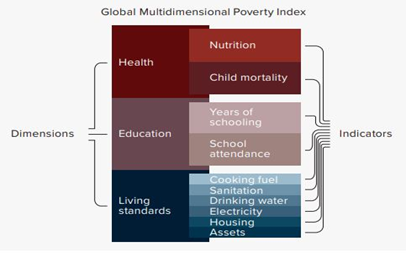
Source: The Hindu
- It has been jointly published by the Human Development Report Office (HDRO) of the United Nations Development Programme and the Oxford Poverty and Human Development Initiative (OPHI) at the University of Oxford since 2010.
- It tells about how prevalent poverty is in the world and provides insights into the lives of poor people, their deprivations and how intense their poverty is—to inform and accelerate efforts to end poverty in all its forms.
- It compiles data from 110 developing countries covering 6.1 billion people, accounting for 92 percent of the population in developing countries.
- It offers a key perspective on SDG 1 i.e. to overcome the greatest global challenge: ending poverty in all its forms.
Key highlights of the Index:
Global Outlook:
- Globally, 1.1 billion people (18% of the total population) out of 6.1 billion people are acutely multidimensionally poor and live in acute multidimensional poverty across 110 countries.
- Sub-Saharan Africa has 534 million poor and South Asia has 389 million.
- These two regions are home to approximately five out of every six poor people.
- Children under 18 year’s old account for half of MPI-poor people (566 million).
- The poverty rate among children is 27.7%, while among adults it is 13.4 %.
Outlook for India:
- Poverty in India: India still has more than 230 million people who are poor.
- The UNDP defines, “Vulnerability — the share of people who are not poor but have deprivations in 20 – 33.3% of all weighted indicators — can be much higher.
- India has some 18.7% population under this category.
- India’s Progress in Poverty Reduction: India is among 25 countries, including Cambodia, China, Congo, Honduras, Indonesia, Morocco, Serbia, and Vietnam, that successfully halved their global MPI values within 15 years.
- Some 415 million Indians escaped poverty between 2005-06 and 2019-21.
- The incidence of poverty in India declined significantly, from 55.1% in 2005/2006 to 16.4% in 2019/2021.
- In 2005/2006, approximately 645 million people in India experienced multidimensional poverty, a number that decreased to about 370 million in 2015/2016 and further to 230 million in 2019/2021.
- Improvement in Deprivation Indicators: India progressed significantly in all the three deprivation indicators: Health, Education, Standard of living.
- Decline in poverty has been equal as well, cutting across regions and socio-economic groups.
- The poorest states and groups, including children and people in disadvantaged caste groups, had the fastest absolute progress.
- The percentage of people who were multidimensionally poor and deprived of nutrition decreased from 44.3% in 2005/2006 to 11.8% in 2019/2021, and child mortality fell from 4.5% to 1.5%.
Significance:
- Contribution to establishing public policy instrument: The creation of the Index is a crucial step in the establishment of a public policy instrument that tracks multidimensional poverty and directs evidence-based and focused initiatives, ensuring that no one is left behind.
- Provides an Overview of Poverty: This provides a broad picture of poverty in the nation while also allowing for more in-depth assessments of areas of interest such regions, states, or districts, and particular sectors, and it enhances current data on monetary poverty.
- Help measure progress towards Sustainable Development Goal (SDG) target 1.2, which aims to “at least halve the proportion of men, women, and children of all ages living in poverty in all its dimensions,” which contributes to the achievement of the SDGs.
Initiatives by Government of India for Poverty Alleviation:
- NITI Aayog is in the last stage for preparation of Multidimensional Poverty Index (MPI) parameter dashboard and a State Reform Action Plan (SRAP).
- In this regard, the Niti Aayog will leverage the monitoring mechanism of the Global Multidimensional Poverty Index.
- NITI Aayog is the nodal agency for the MPI.
- Mahatma Gandhi National Rural Employment Guarantee Scheme (MGNREGS),
- Deendayal Antyodaya Yojana – National Rural Livelihoods Mission (DAY-NRLM),
- Deen Dayal Upadhyay – Gramin Kaushalya Yojana (DDU-GKY),
- Pradhan Mantri Awaas Yojana – Gramin (PMAY-G),
- Pradhan Mantri Gram Sadak Yojana (PMGSY),
- Shyama Prasad Mukherjee National RuRBAN Mission (SPMRM) and National Social Assistance Programme (NSAP), and programmes of Department of Land Resources, viz., Watershed Development Component of Pradhan Mantri Krishi Sinchai Yojana (WDC-PMKSY).
- To support recovery from COVID induced poverty, Pradhan Mantri Garib Kalyan Package was introduced in 2020 and extended in 2021.
Way Forward:
This year’s Multidimensional Poverty Index (MPI) reminds us of the need for a complete picture of how people are being affected by poverty, who they are and where they live. There is a need to design effective responses that leave no one behind.
Source: The Hindu
Practice MCQs
Q1) Consider the following statements
Statement-I:
NASA’s Perseverance Rover was launched in 2002.
Statement-II:
Its landing site was Jezero Crater, Mars.
Which one of the following is correct in respect of the above statements?
- Both Statement-I and Statement-II are correct and Statement-11 is the correct explanation for Statement-I
- Both Statement-I and Statement-II are correct and Statement-II is not the correct explanation for Statement-I
- Statement-I is correct but Statement II is incorrect
- Statement-I is incorrect but Statement II is correct
Q2) Consider the following statements
Statement-I:
The first International Biology Olympiad (IBO) was held in Czechoslovakia.
Statement-II:
India organized this Olympiad in 2008.
Which one of the following is correct in respect of the above statements?
- Both Statement-I and Statement-II are correct and Statement-II is the correct explanation for Statement-I
- Both Statement-I and Statement-II are correct and Statement-II is not the correct explanation for Statement-I
- Statement-I is correct but Statement II is incorrect
- Statement-I is incorrect but Statement II is correct
Q3) Consider the following pairs:
Navigation systems Countries
- GLONASS (Global Orbiting Navigation Satellite System) Russia
- Galileo Italy
- NAVIC (Navigation with Indian Constellation) India
- Bei-Dou Japan
How many of the above pairs are correctly matched?
- Only one
- Only two
- Only three
- None
Mains Practice Questions
Q.) Despite Consistent experience of high growth, India still has low indicators of human development. Examine the issues that make balanced and inclusive development elusive. (250 words)
Comment the answers to the above questions in the comment section below!!
ANSWERS FOR ’ 14th July 2023 – Daily Practice MCQs’ will be updated along with tomorrow’s Daily Current Affairs.st
ANSWERS FOR 13th July – Daily Practice MCQs
Q.1) – d
Q.2) – b
Q.3) -b





